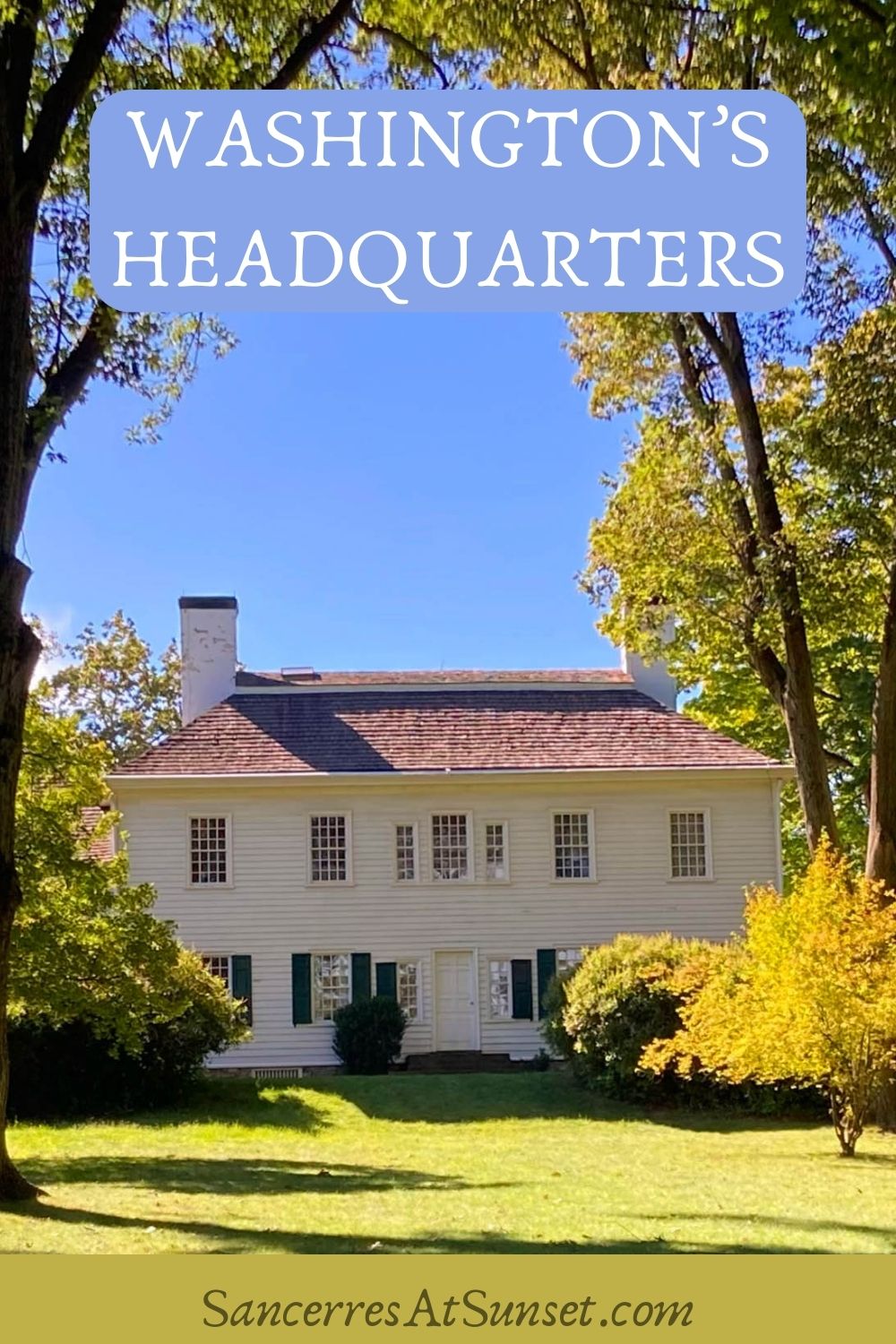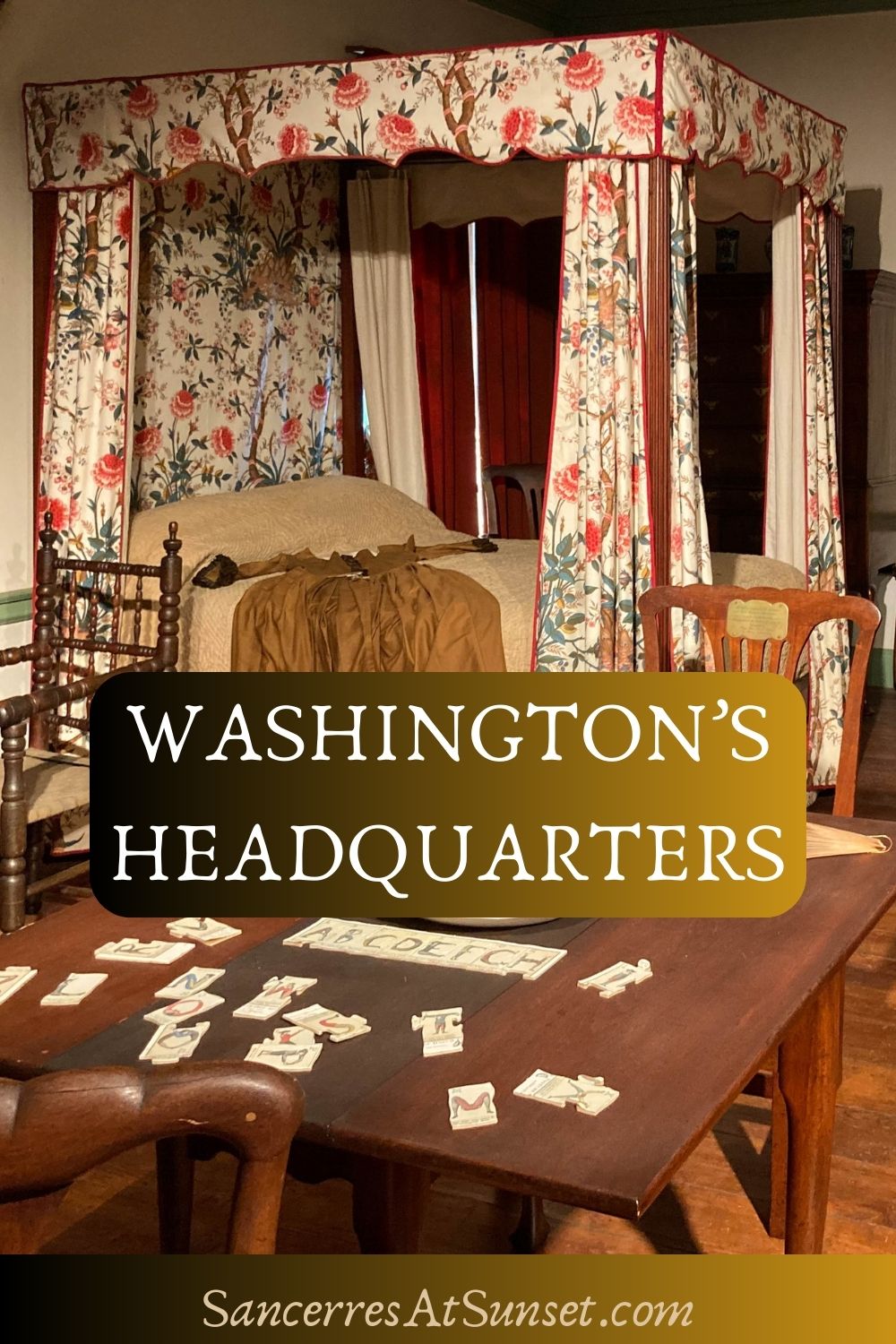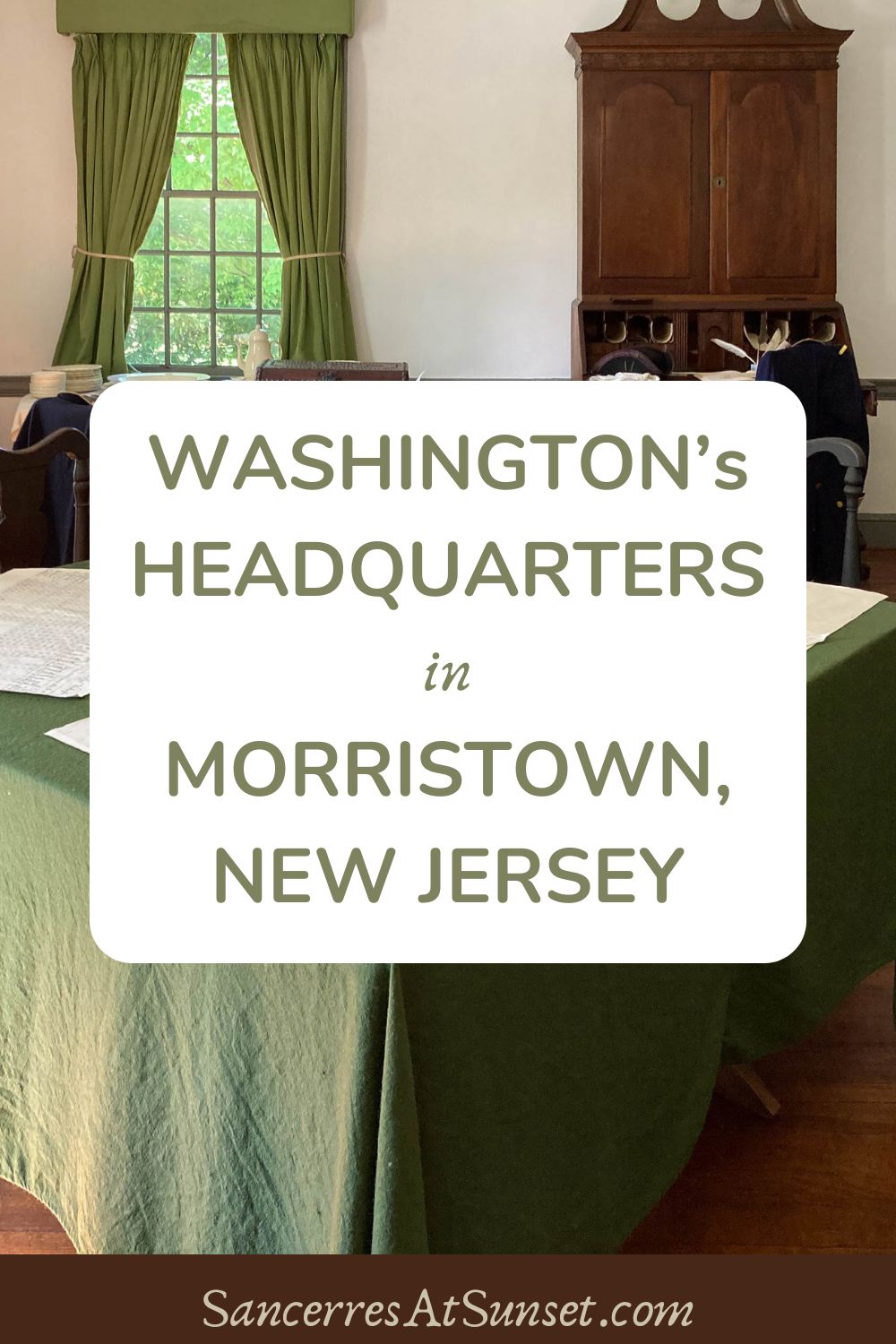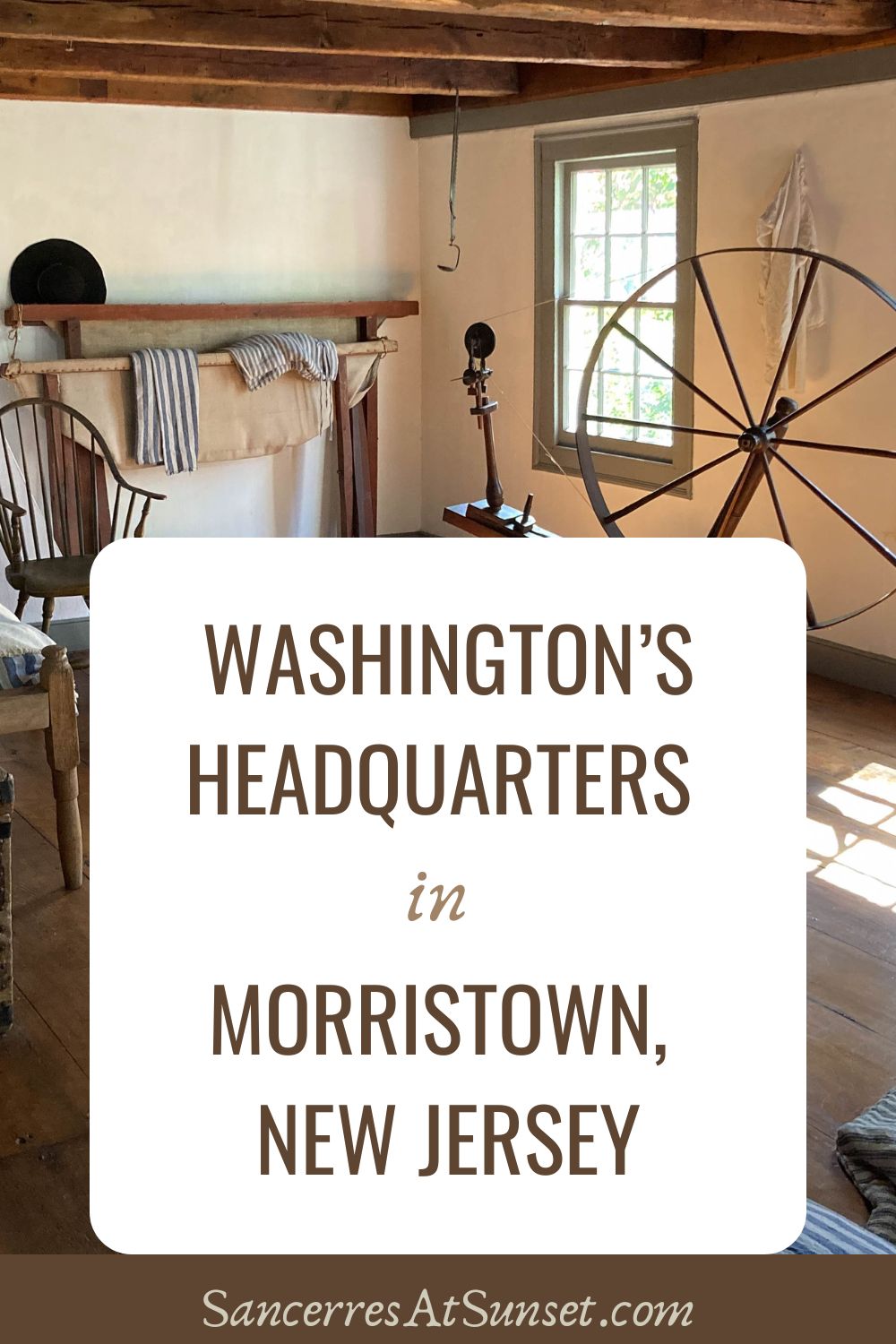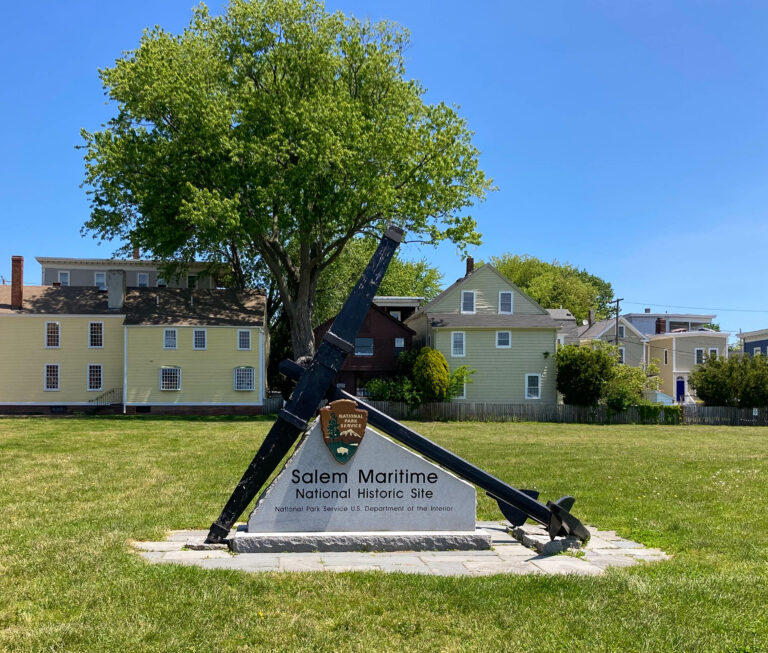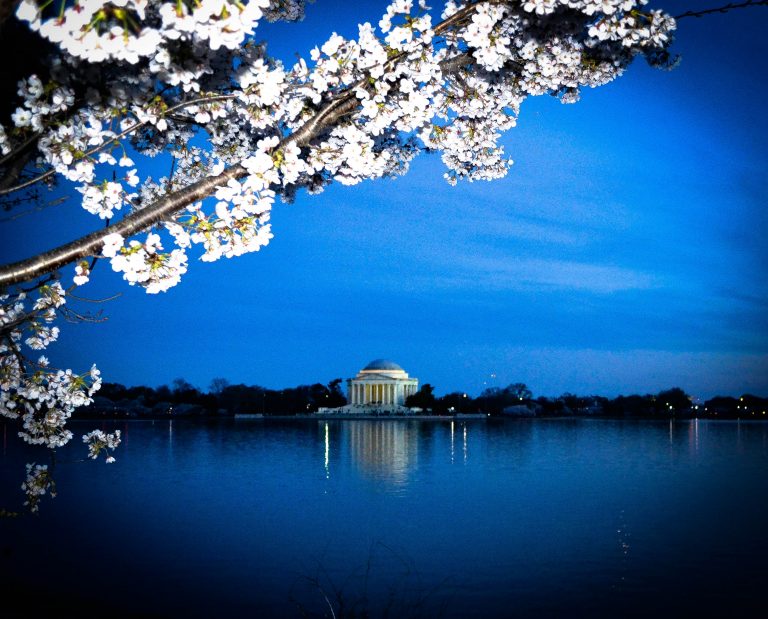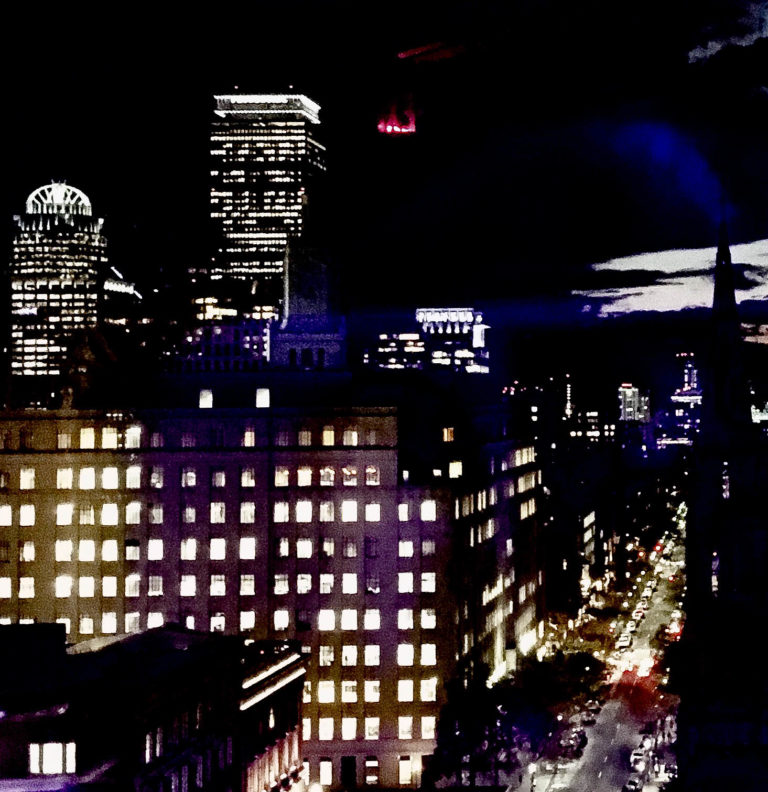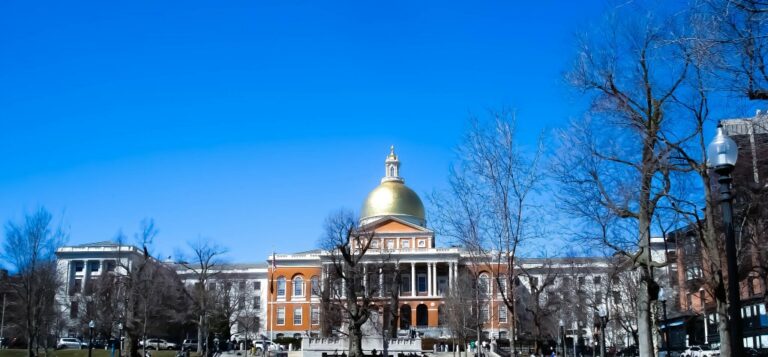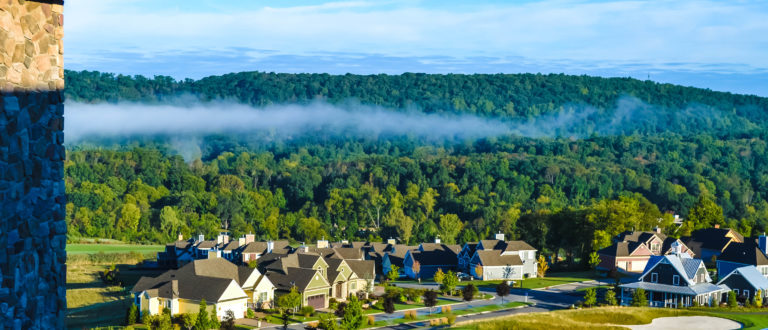Washington’s Headquarters in Morristown, New Jersey
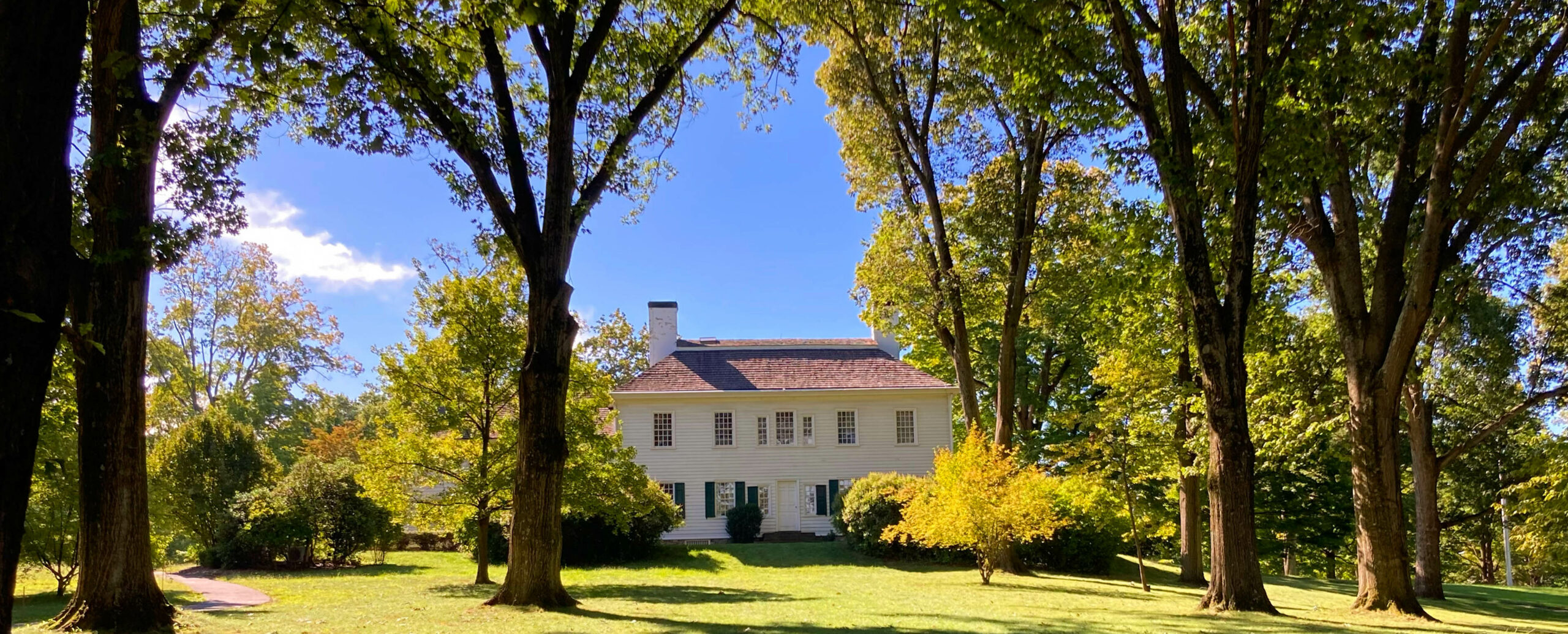
- The Ford Mansion was Gen. George Washington’s headquarters during the winter of 1779-80.
- Today it is part of Morristown National Historical Park in New Jersey.
- The Mansion is open to the public by guided tour, and there is an excellent Museum as well.
- The Park, Mansion, and Museum are free of charge to explore.
This post contains affiliate links. For more information, click here.
Colorful leaves lay scattered on the ground. Bare branches reached up toward the blue sky. A damp chill hung in the crisp air.
It was December 1, 1779. The Continental Army was marching into northern New Jersey. General George Washington had selected Morristown for his winter quarters.
Gen. Washington placed his troops in a forest area called Jockey Hollow, where they felled trees and built cabins.
He set up his own headquarters at the home of Theodosia Ford. It’s now a museum. I visited last month during my road trip in New Jersey.
She was the widow of Jacob Ford, Jr., an iron manufacturer and colonel in the Continental Army. He had died of pneumonia while in service in 1777.
The two-storey Georgian-style house was completed in 1774. Mrs. Ford and her four children moved into two rooms, while Washington and his company took over the rest of the house.

His wife Martha arrived on New Year’s Eve. The couple stayed in the master bedroom.

Gen. Washington used the study for his work.
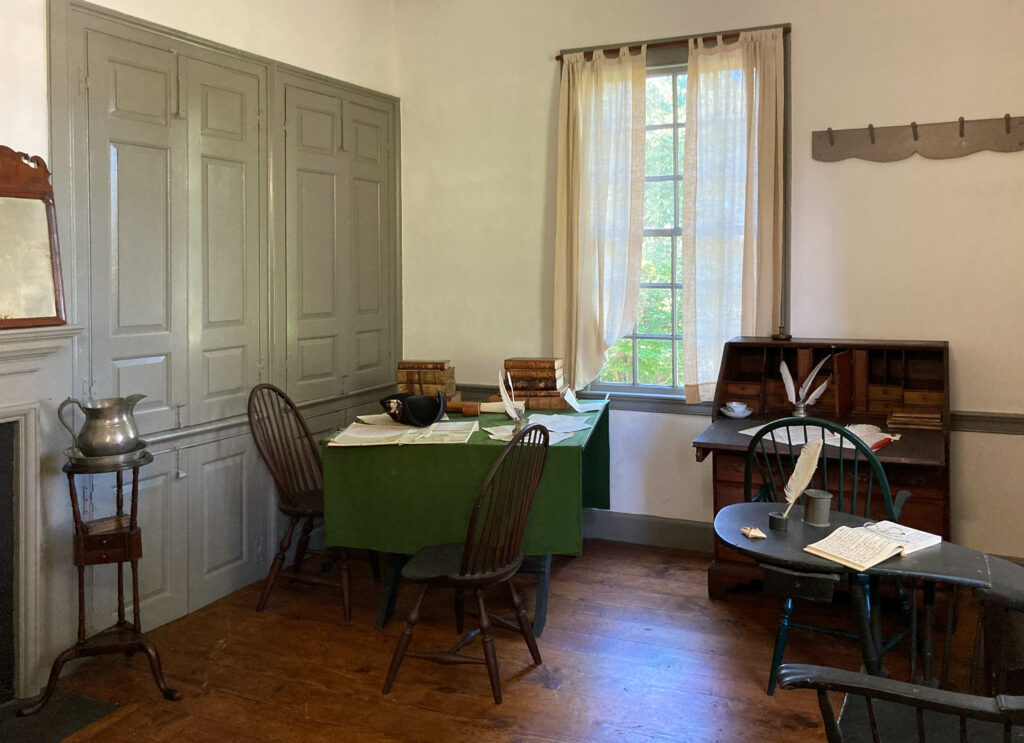
His five aides-de-camp, including Alexander Hamilton, used the parlor.

The Washingtons also brought 18 servants. Visiting dignitaries stayed for brief periods as well. On some nights, as many as 30 people stayed in the house.
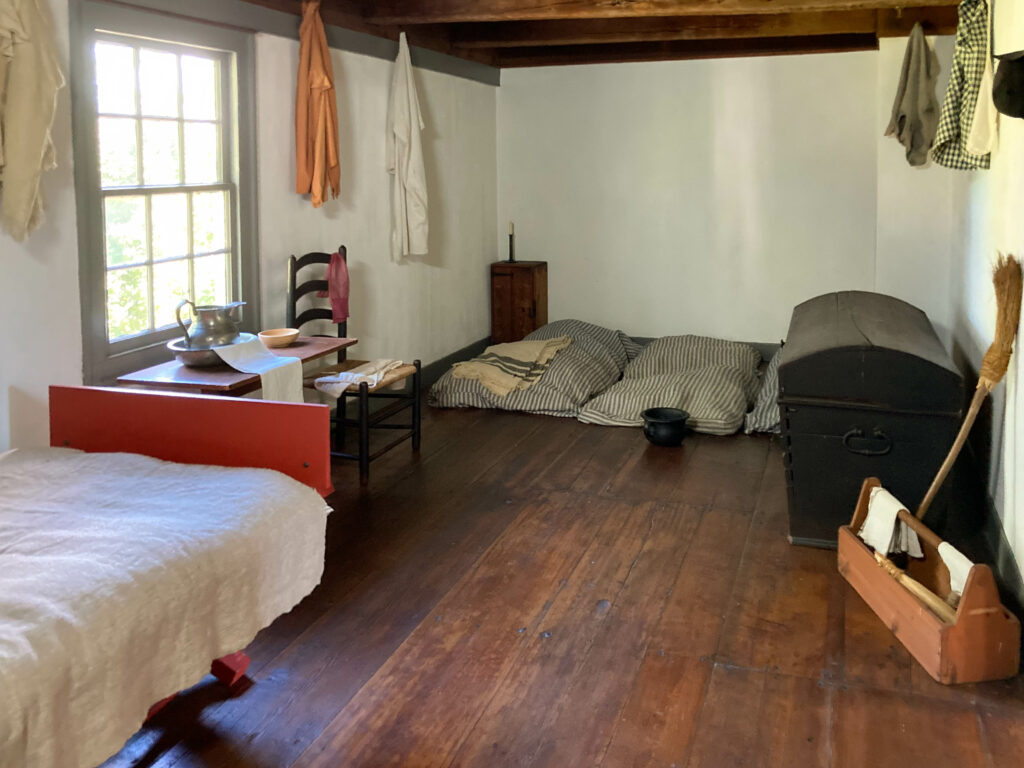
The region had several strategic advantages. The Watchung Mountains shielded it from British attack. It sits about 80 miles from Philadelphia, where our newborn nation’s Continental Congress met. It was also about 30 miles from New York City, where the British Army was headquartered — a two-day march away but close enough for the General’s spies to keep tabs and report back.
The land had abundant natural resources, like water and wood. There were farmers and tradesmen to supply the Army with food, weapons, and other necessities. At least, that was the plan.
And it was familiar. Washington had made the area his headquarters three years earlier, after the extraordinary victory at Trenton.
The 1776-77 stay had been largely uneventful. The 1779-80 winter would be anything but.
The biggest problem was the weather. The winter of 1779-80 would be the worst of the Revolutionary War and quite possibly the worst in American history. It snowed 28 times. Temperatures lingered below freezing. One blizzard lasted two days and left four feet of snow.
Impassable roads meant food and supply shortages, made worse because the Continental Congress was slow to pay its soldiers, and because rampant inflation cut the value of paper money. They rarely had meat or bread. Blankets, hats, and shoes were scarce and getting scarcer.
Against this backdrop, Benedict Arnold faced a court martial. Two years earlier, Brigadier General Arnold had been the hero at Saratoga — where two key battles turned the tide of the Revolutionary War. The Continental Army’s unlikely victory over British showed the world that we could win the War. Soon after, France signed a treaty of alliance and pledged support to the fledgling United States. But while they did provide material support, they did not initially send much-needed ground troops.
Arnold had been severely wounded at the second Battle of Saratoga. As he recovered, Washington appointed him as military commander of Philadelphia. It would prove to be one of the most damaging decisions of his life.
The position provided lots of opportunities for newly promoted Major General Arnold to enrich himself with financial shenanigans. He was greedy and corrupt, and he took advantage.
His court martial for financial misconduct had begun in Philadelphia on June 1, 1779. But the realities of the War intruded, and the trial was interrupted until December 23, in Morristown. He was acquitted on most of the charges, but Washington issued him a formal reprimand. It was a mild punishment, but it fueled Arnold’s aggrieved sense of entitlement.
But not everything that happened was bad. Alexander Hamilton fell in love. He met Elizabeth Schuyler at the Morristown home of an aunt and uncle with whom she was spending the winter. According to one legend, he was so excited after meeting her that he forgot the password needed for re-entry to the Ford mansion.
But the best tidings of all came on May 10, 1780. The Marquis de Lafayette arrived with the news that the French would be sending about 6,000 ground troops, led by the Comte de Rochambeau.
Within the year, Rochambeau and his soldiers would arrive at Newport. Hamilton would marry Elizabeth Schuyler in Albany. Arnold would turn traitor — plotting to surrender West Point to the British.
And in the year after that, Washington and Rochambeau and their troops would march to Virginia, passing through Morristown, on to the War’s decisive victory at Yorktown.
What to Know before You Go to the
Ford Mansion —
Washington’s Headquarters in Morristown
The Ford Mansion is part of Morristown National Historical Park. The address is 30 Washington Place in Morristown.
There is a small parking lot.
Visitors start at the Washington Headquarters Museum. It’s one of the better NPS visitor centers that I’ve explored. It has an orientation film that brings to life the extraordinary harshness of the winter that the soldiers faced, lots of interactive exhibits, and a remarkable collection of political pamphlets. The architect of the Colonial Revival building was John Russell Pope, who also designed the West Building of the National Gallery of Art. You may explore the Museum on your own and meet up with a docent who will escort you with a group to the Ford Mansion for a guided tour.
The Park also contains Jockey Hollow, which has its own visitor center at 586 Tempe Wick Road. And it has trails suitable for hiking, biking, and horseback riding.
The Park is free of charge to explore. It is open seasonally several days a week. Please check the NPS Web site for up-to-date information.
Wear layers suitable for the weather and comfortable, closed-toe walking shoes.
Allow two to four hours.
Continue your adventure in the northeast:
- Cooking Class at Boston Seaport Hotel in Massachusetts
- Springtime in Burlington, Vermont
- Weekend in the White Mountains

After my misspent youth as a wage worker, I’m having so much more fun as a blogger, helping other discerning travellers plan fun and fascinating journeys. Read more …
